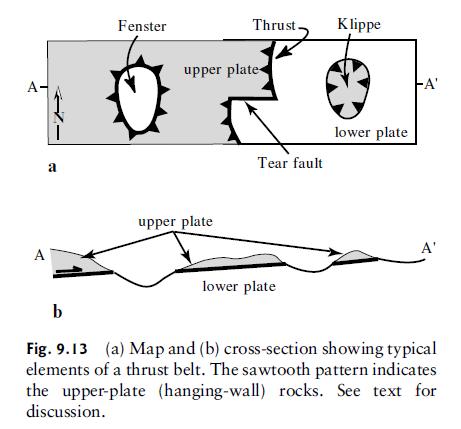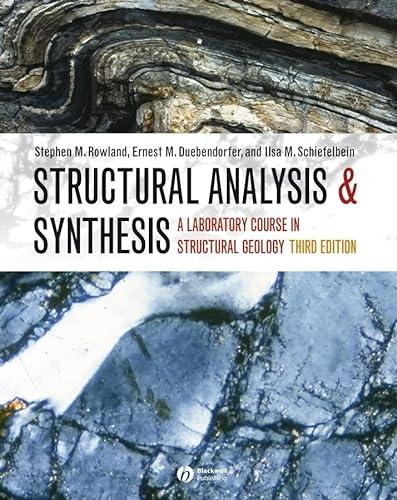a. A geologist studying thrust faults in a Proterozoic shear zone in southern Wyoming developed the hypothesis
Question:
a. A geologist studying thrust faults in a Proterozoic shear zone in southern Wyoming developed the hypothesis that all of the thrust faults formed during a regional north–northwest/south–southeast shortening event. Unfortunately, before she was able to analyze her data she was killed by a grizzly bear. Fortunately, her field notebook survived the attack. With her last breath, the dying geologist whispered to her field assistant: ‘‘Please, do a kinematic analysis of the fault data and find out whether they support or falsify my hypothesis.’’
Use the data from her notebook, tabulated below, to fulfill her dying wish. First construct a plot showing the orientations of the faults, pitch of slickenlines, and slip direction (as in Fig. 10.6b). Then, construct a second plot that shows the extension and shortening axes (as in Fig. 10.6d). There are not enough data to contour, so visually determine the ‘‘best fit’’ shortening axis direction.
In one succinct sentence, explain what your analysis tells you about the dead geologist’s hypothesis.
b. Near the shear zone discussed in Part A, above, is a region characterized by faults with a dominantly strike-slip sense of slip. There is a controversy as to whether or not these strike-slip faults are kinematically related to the thrust faults. While continuing the work of her deceased boss, the precocious field assistant developed the hypothesis that the strike-slip faults are tear faults (cf. Fig. 9.13) that formed during the same episode of thrusting as the faults examined in Part A. Tabulated below are her data on six faults. Test this hypothesis by constructing two plots, as before, one plot of the faults and slickenlines, and the second plot of the extension and shortening axes for the faults tabulated below. Succinctly discuss the kinematic compatibility or lack of compatibility of the strike-slip and thrust faults.
Fig. 10.6d,b

Step by Step Answer:

Structural Analysis And Synthesis A Laboratory Course In Structural Geology
ISBN: 9781405116527
3rd Edition
Authors: Stephen M. Rowland, Ernest M. Duebendorfer, Ilsa M. Schiefelbein




